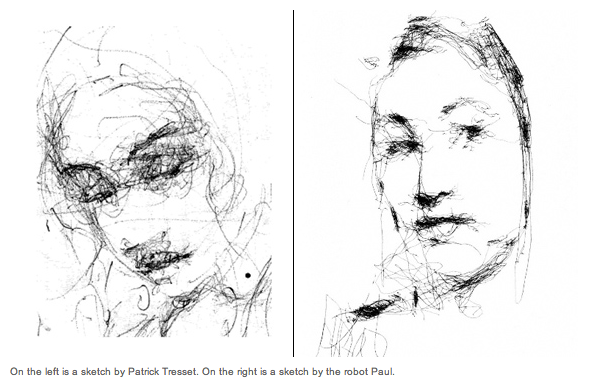Paul, the artistic robot
A painter who lost his passion for art after going into treatment for a mental health issue, Patrick Tresset, sought to recapture his creativity by creating a robot who could draw in his style.
“When we draw, the difficulty is not in making the lines. The difficulty is in the perception of the subject and the perception of the drawing in progress.” But sometimes, it may help to make it seem that the robot has difficulty in making the lines—Tresset has found that people feel more empathy for the machines when they make human-esque mistakes like crooked or tilted lines. (He calls this “clumsy robotics.”) Humans are inclined to want to identify with robots, especially those with faces: Give a person a bot, and he or she will probably name it. But why is that connection important in robots that draw? Tresset believes that if the person being sketched feels something for the machine wielding the pen, he or she will find the 30-minute sketching process “more touching.” Plus, if the sitter assigns a personality to the robot, it might alter the human’s emotional response to the final product.
It’s an interesting feedback loop the robot creates: mechanically induced faults and artificial humanity create empathy in the subject which translates to that genuine emotion being captured by the robot in the sketch.






Stay Connected